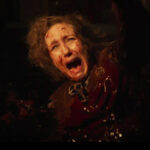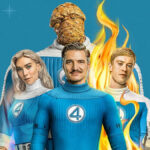Emily Brontë’s classic novel Wuthering Heights has captivated readers for generations with its tumultuous tale of love and revenge on the Yorkshire moors. The doomed romance between the fiery Heathcliff and strong-willed Catherine, along with the novel’s atmospheric Gothic tone, has made it ripe for adaptation to film, television, theatre, and more. Let’s take a look at how the major Wuthering Heights adaptations stack up against each other.
10. Wuthering Heights (1920 film)
Kicking off the list is the very first film adaptation of the novel, a British silent film from 1920 directed by A.V. Bramble. Very little is known about this version, as it is considered a lost film. No prints are known to still exist. Without being able to actually view it, this early attempt at bringing Wuthering Heights to the screen has to assume the bottom spot, as a mere historical curiosity.
9. Wuthering Heights (1953 TV film)
This BBC television adaptation starred Richard Todd as Heathcliff and Yvonne Mitchell as Catherine. It was scripted by Nigel Kneale, who would go on to create the famous Quatermass science fiction serials. However, Kneale had to write the script in only a week as the production was rushed when Todd expressed interest in playing Heathcliff.
As a result, Kneale’s adaptation focuses solely on the first half of the novel, completely removing the second generation story with Cathy, Linton and Hareton. This abbreviated approach makes it one of the less comprehensive adaptations. Additionally, no recordings of this live television broadcast are known to survive, so like the 1920 film, it is now lost. The lack of availability and incomplete story put this version near the bottom of the rankings.
8. Wuthering Heights (1948 TV film)
Another BBC television version, this 1948 adaptation starred Kieron Moore as Heathcliff and Katharine Blake as Catherine. Directed by George More O’Ferrall, little else is known about this early TV production. While it may have been a noble attempt to translate the novel to the then-new medium of television, the lack of information available about it and the fact that it has not stood the test of time as a definitive adaptation of the story relegates it to a lower position on this list.
7. Wuthering Heights (1958 TV film)
The late 1950s saw Wuthering Heights adapted as an episode of the American television series Matinee Theater. Broadcast on NBC, this condensed version starred Richard Boone as Heathcliff and Mary Sinclair as Catherine. While notable for featuring Boone, who would later become famous on the Western series Have Gun – Will Travel, this production was likely limited by the constraints of 1950s television. Cramming the events of the novel into a one-hour time slot while also accommodating commercial breaks was surely a challenge. Without the luxury of a longer runtime to faithfully depict the full scope of Brontë’s story, this Matinee Theater episode earns a spot in the lower middle of the pack.
6. Hihintayin Kita sa Langit (1991 film)
This Filipino film, whose title translates to “I Will Wait for You in Heaven,” transplants the story of Wuthering Heights to the Philippines. Richard Gomez and Dawn Zulueta star as Gabriel and Carmina, the Heathcliff and Catherine analogues. Directed by Carlos Siguion-Reyna, the movie reframes elements of Brontë’s plot to fit its new cultural context.
Changing the setting allows the filmmakers to comment on issues of class and privilege in Filipino society. However, by straying from the source material, some of what makes Wuthering Heights so enduring and iconic is lost in translation. The decision to have the Heathcliff character Gabriel ultimately become a priest also rings a bit false. While an interesting attempt at adapting the novel, this version lacks the passion and Gothic atmosphere that defines Wuthering Heights.
5. Hurlevent (1985 film)
French New Wave director Jacques Rivette put his own spin on Wuthering Heights with this 1985 adaptation. Relocating the action from Yorkshire to the French countryside, Hurlevent makes some bold choices in how it interprets the source material. The film combines the characters of Hindley and Edgar into one, and changes Catherine’s name to Roch. Most drastically, it alters the ending to have Roch commit suicide and Heathcliff follow suit, as opposed to Heathcliff willing himself to death.
Rivette’s impressionistic visual style lends the movie an appropriately dreamlike quality, but the liberties taken with the plot are likely to frustrate fans of the novel. The decision to have the lovers die by suicide is especially puzzling, as it removes the sense of Heathcliff and Catherine being supernaturally linked even in death, which is key to the novel’s power. Hurlevent gets points for atmosphere and auteur vision, but its narrative deviations keep it from being a top tier Wuthering Heights adaptation.
4. Wuthering Heights (1970 film)
This American film directed by Robert Fuest is a decent attempt at capturing the novel, elevated by committed lead performances. Timothy Dalton smolders as Heathcliff, while Anna Calder-Marshall brings suitable fire to Catherine. However, this version only adapts the first half of the novel, once again jettisoning the second generation story.
The decision to excise the back half of the book is an understandable one, as that portion of the novel tends to drag a bit compared to the passionate heights of Heathcliff and Catherine’s romance. But it does make for a less than complete adaptation. The movie also suffers a bit from its low budget, with some interior scenes coming off as stagy. Ultimately, Dalton and Calder-Marshall’s performances make this a worthy if truncated version of the story.
3. Onimaru (1988 film)
Japanese New Wave director Yoshishige Yoshida radically reinterprets Wuthering Heights with this film, which translates to “Demon Dog.” Set in medieval Japan, the story centers around two rival clans and a young woman named Kinu, the Catherine figure. Taira no Yoshitaka takes the Heathcliff role as an orphan adopted into Kinu’s family who is discriminated against due to his mixed heritage.
Onimaru keeps the basic skeleton of Brontë’s plot but adds elements of Japanese culture and mythology, yielding a moody, meditative take on the material. Yoshida employs a spare visual style and deliberate pacing that may alienate some viewers, but perfectly captures the chilly insularity of the world these characters inhabit. By provocatively engaging with the novel’s themes of prejudice, class conflict, and doomed love, Onimaru proves that the essence of Wuthering Heights is universal even when specifics are changed. It’s an art film to be sure, but a haunting and memorable one.
2. Wuthering Heights (1939 film)
For many, this Hollywood adaptation from director William Wyler remains the definitive film version of Wuthering Heights. It’s easy to see why, as it features impeccable production values, an emotionally charged screenplay co-written by Charles MacArthur and Ben Hecht, and unforgettable lead performances from Merle Oberon and Laurence Olivier.
Olivier is magnificent as Heathcliff, all barely contained fury and anguished longing, while Oberon brings both strength and vulnerability to Cathy. Their chemistry is palpable, selling the idea that these two share a love that transcends all earthly concerns. The film soars in its depiction of the first half of the novel, beautifully rendering the windswept romance between Heathcliff and Cathy.
If there’s a flaw, it’s that like several other adaptations, this one entirely omits the second half of the book focusing on the younger generation. It’s hard to blame Wyler and company for this choice, as the Heathcliff/Cathy story is the true heart of the novel and is more than enough to support a feature film. And by jettisoning that section, the filmmakers are able to really luxuriate in the gothic passion of the central romance. The result is a sweeping, tragic love story that captures the dark pull of Brontë’s novel, making it one of the most iconic Wuthering Heights adaptations.
1. Wuthering Heights (1992 TV film)
Topping the list is this 1992 TV movie adaptation directed by Peter Kosminsky. Unlike many other versions, this one actually adapts the entire novel, including the second half focused on the children of Heathcliff, Cathy, and Hindley. While this makes for a longer and somewhat uneven viewing experience, it is truer to the source material than most other Wuthering Heights adaptations.
What really makes this version soar, though, are the performances. Juliette Binoche is devastating as both Catherine Earnshaw and her daughter Cathy, capturing the character’s wild spirit and inner turmoil. Ralph Fiennes matches her every step of the way as Heathcliff, convincingly portraying his journey from abused orphan to wealthy gentleman to bitter shell of a man. Fiennes brings out Heathcliff’s cruelty without ever losing sight of the wounded soul at his core.
The film is also visually striking, with cinematographer Peter Hannan making evocative use of the Yorkshire landscape. The moors become a character unto themselves, a harsh, unforgiving place that nonetheless has a dangerous allure. By fully committing to the dark pathology of Brontë’s novel and presenting it with raw emotional honesty, this Wuthering Heights earns its place as the most complete and compelling adaptation of this classic story.
So there you have it – a ranking of the most notable film and television adaptations of Wuthering Heights. While each has its merits, the 1992 version stands above the rest as the most faithful and emotionally resonant take on Brontë’s masterpiece. With its complex performances, visual poetry, and fidelity to the novel’s structure and themes, it is the Wuthering Heights adaptation that perhaps best captures the tortured spirit of the source material.





